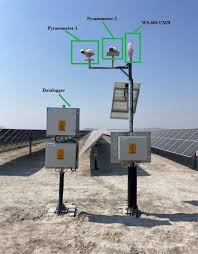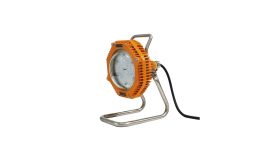Integrated Environmental and Weather Monitoring Station: A Comprehensive.
An Integrated Environmental and Weather Monitoring Station is a sophisticated system designed to collect, analyze, and report environmental and meteorological data. These stations are used in various fields, including climate research, agriculture, urban planning, disaster management, and environmental protection. By integrating multiple sensors and data collection systems, these stations provide real-time monitoring of critical environmental parameters, offering valuable insights for decision-making and long-term planning.
In this article, we will explore the components, applications, features, and benefits of an Integrated Environmental and Weather Monitoring Station, focusing on how such systems can be used to address environmental challenges and improve sustainable development.
Components of an Integrated Environmental and Weather Monitoring Station
An integrated monitoring station typically comprises several key components, each designed to monitor specific environmental parameters. These components work together to provide comprehensive data, which can then be analyzed and used for a variety of purposes.
1. Meteorological Sensors
- Temperature Sensors: Measure air and ground temperatures, which are essential for climate studies and weather forecasting.
- Humidity Sensors: Monitor the relative humidity of the air. This data is crucial for predicting weather patterns and understanding local microclimates.
- Pressure Sensors: Measure atmospheric pressure, which is important for forecasting weather changes, including the formation of storms.
- Wind Sensors: Include anemometers and wind vanes to measure wind speed and direction, helping to assess weather conditions and understand wind patterns.
- Rain Gauges: Collect data on precipitation, which is critical for flood forecasting, agricultural planning, and water resource management.
- Solar Radiation Sensors: Measure solar radiation to assess sunlight intensity and its effect on environmental conditions, including the energy balance of the region.
- UV Radiation Sensors: Monitor ultraviolet radiation levels, which can be important for assessing environmental and health risks related to UV exposure.
2. Environmental Sensors
- Air Quality Sensors: These sensors measure levels of pollutants such as carbon dioxide (CO₂), carbon monoxide (CO), nitrogen dioxide (NO₂), particulate matter (PM2.5 and PM10), and ozone (O₃). Monitoring air quality is crucial for public health, especially in urban areas or regions with industrial activity.
- Soil Moisture Sensors: Measure the moisture content in soil, which is essential for agricultural monitoring, drought management, and water conservation efforts.
- Soil Temperature Sensors: Measure the temperature of the soil, which can affect plant growth and the overall health of ecosystems.
- Water Quality Sensors: Measure parameters such as pH, turbidity, dissolved oxygen, and temperature in bodies of water, helping to monitor water pollution and the health of aquatic ecosystems.
- Albedo Sensors: Measure the reflectivity of surfaces (such as vegetation, soil, or snow), providing data on the local energy balance and helping to model climate changes.
3. Data Acquisition and Communication System
- The data collected from these sensors is transmitted via data loggers and sent to a central system for analysis. Communication technologies such as Wi-Fi, LTE/5G, radio frequency, and satellite communication allow for remote data transmission to monitoring stations or cloud-based platforms for real-time access and analysis.
4. Power Supply
- An Integrated Environmental and Weather Monitoring Station typically requires a stable power source to operate sensors and communication systems. Many stations are powered using solar panels, ensuring energy sustainability in remote locations. Backup power systems, such as batteries or generators, are also commonly included.
5. Software for Data Visualization and Analysis
- Data collected from various sensors is analyzed using specialized software that can process large datasets, perform statistical analysis, and present the results in user-friendly formats. Graphs, maps, and dashboards help users to quickly understand trends and make informed decisions based on the data.
Applications of Integrated Environmental and Weather Monitoring Stations
Integrated Environmental and Weather Monitoring Stations are used in a wide range of applications, across various industries and sectors. Some of the most common uses include:
1. Climate and Weather Monitoring
- These stations provide valuable data for meteorologists and climatologists to monitor weather patterns and long-term climate trends. This data is essential for weather forecasting, early warning systems, and understanding climate change impacts.
2. Agriculture and Precision Farming
- By monitoring soil moisture, temperature, humidity, and other environmental factors, farmers can make data-driven decisions about irrigation, crop management, and pest control. Precision farming reduces resource consumption, improves yields, and enhances sustainable farming practices.
3. Air Quality Monitoring
- Air quality monitoring stations are used in urban areas, industrial sites, and regions affected by pollution to track levels of harmful pollutants. These stations are essential for public health studies, environmental compliance, and meeting air quality standards.
4. Water Resource Management
- Environmental monitoring stations provide water quality, river levels, and precipitation data, which is critical for water resource management. This helps with flood prediction, sustainable water usage, and maintaining the health of aquatic ecosystems.
5. Disaster Management and Early Warning Systems
- Integrated stations play a crucial role in natural disaster prediction. By monitoring environmental variables like temperature, wind speed, and rainfall, the system can issue early warnings for events such as hurricanes, floods, and wildfires, helping communities to take preventive actions and minimize loss of life.
6. Urban Heat Island Studies
- Urban areas tend to be warmer than surrounding rural areas due to human activities and the concentration of buildings and infrastructure. Albedo sensors in these stations help to monitor the urban heat island effect, providing data to urban planners for mitigating strategies like green roofing, urban forestry, and reflective materials.
7. Ecosystem and Biodiversity Monitoring
- By measuring factors like soil temperature, moisture, and air quality, these stations help researchers study the health of ecosystems and biodiversity. This data is important for conservation efforts and managing protected areas.
Key Features of Integrated Environmental and Weather Monitoring Stations
- Real-Time Data Collection: Continuous monitoring allows for real-time reporting of environmental conditions, providing immediate access to crucial data.
- Remote Monitoring Capabilities: Many stations can operate autonomously in remote locations, transmitting data back to central servers or cloud platforms for analysis.
- Modular Design: Integrated stations can be customized to include sensors and features based on specific needs, making them adaptable to different monitoring requirements.
- Scalability: As monitoring needs grow, systems can be expanded with additional sensors, weather stations, or data logging devices.
- Data Visualization and Reporting: Advanced software tools allow users to visualize data trends, generate reports, and make data-driven decisions.
- Energy Efficiency: Solar-powered systems and low-energy sensors ensure that monitoring stations can run in off-grid locations with minimal environmental impact.
Benefits of Integrated Environmental and Weather Monitoring Stations
- Improved Decision-Making: By providing accurate, real-time data, these stations allow governments, researchers, and businesses to make informed decisions regarding public health, environmental protection, and resource management.
- Enhanced Sustainability: Real-time data collection helps to optimize resource use, reduce waste, and promote sustainable practices across various sectors, from agriculture to energy.
- Early Warning for Hazards: Early detection of weather events, pollution spikes, or changes in environmental conditions helps mitigate the impacts of natural and man-made disasters.
- Public Health Protection: Monitoring air quality, UV radiation, and water quality helps to protect public health, particularly in urban areas or regions with high pollution levels.
- For more details about their product and Services, call us at +91 9910163004 or Mail us at: [email protected], Visit the website: Meteoxperts. https://www.meteoxperts.com/




